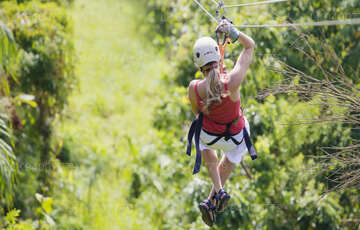

Colombo City
Colombo, the capital of Sri Lanka, is a dynamic city blending tradition and modernity. It showcases colonial architecture, lively markets, and serene Buddhist temples. With diverse cuisine, a growing skyline, and beautiful beaches, it's a vibrant hub for business, culture, and tourism, offering a gateway to explore Sri Lanka's wonders.
St Thomas Chapel
Ginthupitiya is a very busy region that is part of Kotahena (Colombo 13). Bustling with people; the place is jam-packed with residences, commercial buildings, public buildings, churches and temples. Ginthupitiya is also the home of the first Anglican Church in Sri Lanka, St Thomas’ Church. This simple church was built in 1816 by the British Governor Robert Brownrigg. However, the roots of its history run much deeper into the annals of time.
The History of St Thomas’ Church
Let us go backward in time to approximately 2000 years ago. It was the era when the Roman empire was on the rise. Jesus had died on the cross; crucified by the Romans who possibly considered him a political threat and a troublemaker. His twelve disciples (the Apostles) were devastated and tried their best to carry forward their master’s work. They tried to spread His word, and started traveling for that purpose.
Amongst them was the Apostle Thomas, also known as Doubting Thomas for not having believed in Jesus’ resurrection. He later became a true believer who avidly spread the message. St Thomas decided to move to India to spread the word in Asia. According to legend, it’s said that he stopped at Colombo port and did one of his very first sermons here. The port area was occupied by fishermen at the time, and they are said to have been an attentive audience. There is evidence (which is mentioned of further on in this account) to believe that Christianity may have spread briefly in the area as a result of his sermon. St Thomas went on to India after that, where he spent the rest of his life; and was credited for the establishment of seven and a half churches in India. Remains, that were believed to be his, were found in Mylapore and enshrined.
Centuries passed. Then in the early 1500s, the Portuguese invaded Sri Lanka. Their aim was not only to conquer the country, but also to spread Roman Catholicism amongst the ‘savages’.
As such they built churches wherever possible, and enforced Christianity in the places they conquered. Shrines of other religions were destroyed; and the most devout followers and leaders of the religions were killed. While all this was taking place, the Portuguese also kept an eye out for any viable places to build churches and further the spread of Christianity.
According to the records of the antiquarian Frederick Medis and according to the writings of Professor Peter Courtenay in his book ‘History of Ceylon’, it’s mentioned that there was a Nestorian cross found by the Portuguese in the Ginthupitiya area. The place was apparently called ‘San Thome Pitiya’ and there were some who practiced a rudimentary form of Christianity; pointing towards there having been a community of Persian Christians after St Thomas’ arrival. The Portuguese immediately established a church on the spot and worked hard to convert the people there. Soon the people there became devout Catholics.
But then when the Dutch took over the country from the Portuguese in the 1600s, they attempted to stamp out any evidence of Catholicism. During the widespread destruction that they wreaked during this time, St Thomas’ Church was pried out of the hands of Franciscan monks for its vantage point. The Dutch destroyed the religious symbols, and used the structure as their marine headquarters for the area. They also constructed three graveyards within the premises; one for their own countrymen, one for their local allies and one for the outsiders/non-conformists known as "Genthos" in Dutch. It is believed that it was the third graveyard that led to the name of the area being changed from "San Thome Pitiya" to “Genthopitiya". Approximately a century later, when the British took over, the displeased locals petitioned the new authorities to build them a new church. This group of locals, who were Tamil settlers from Kerala, even donated the funds to build the church; such that the British did not have to make any contributions. Many of the old materials were also reused, and the church was constructed under the direction of the Governor at the time, Sir Robert Brownrigg.
Formally consecrated in 1815, the Church became the very first Anglican Church to be built in Sri Lanka. The first church service was held on 16 July 1816, with the Rev. George Bisset conducting the Service. Rev. M. Twisleton delivered the sermon and prayers were said in Tamil by G. J. Ondaatjie.
The Church Today
Today, 200 years later, the simple structure of the church stands as testament to bygone eras. Surrounded by palm trees and sunshine, the place is quite calming and has a great view. The western wall of the church displays Brownrigg’s name. Though the inside seems quite plain, the place is livened up by an old-world charm with its white walls and finely polished wood.
Outside the church the graveyard still had some of the old Dutch tombstones. This graveyard tells a tale of artistry; from gothic sculptures to elephants, palm trees and classic European skulls; this place has it all. One of the things of note is the clear Tamil inscription on one of the graves, along with the Dutch lettering. It’s quite interesting to wander through this graveyard as it contains quite a bit of history.
Despite it’s seeming simple nature, St Thomas’ still hides many secrets that have not been found. Until just a few years ago it was undiscovered that the wooden panelling behind the altar was genuine Burmese teak, possibly brought in by the Dutch and used by the British in the style of the South Indian churches. Even more recently, excavations due to some weak flooring revealed ancient clay floor tiles buried under three layers of sand. The tiles were much older that the British era, though researchers are still unsure of the exact period.
The full extent of the historical unknowns behind St Thomas’ Church are still unknown, and only time will tell what these hidden secrets are.
About Colombo District
Colombo is the largest city and commercial capital of Sri Lanka. It is located on the west coast of the island and adjacent to Sri Jayewardenepura Kotte, the capital city of Sri Lanka. Colombo is a busy and vibrant city with a mixture of modern life and colonial buildings and ruins and a city population of 647,100.The Colombo Metropolitan Region, defined by the districts of Colombo, Gampaha and Kalutara, has an estimated population of 5,648,000, and covers an area of 3,694.20 km²
Colombo is a multi-ethnic, multi-cultural city. It is the most populous city in Sri Lanka, with 642,163 people living within the city limits. The population of Colombo is a mix of numerous ethnic groups, mainly Sinhalese, Moors and Tamils. There are also small communities of people with Chinese, Portuguese, Dutch, Malay and Indian origins living in the city, as well as numerous European expatriates.
The great majority of Sri Lankan corporations have their head offices in Colombo. Some of the industries include chemicals, textiles, glass, cement, leather goods, furniture, and jewellery. In the city center is located South Asia's second tallest building - The World Trade Centre.
About Western Province
The Western Province is the most densely populated province of Sri Lanka. It is home to the legislative capital Sri Jayawardenepura Kotte as well to Colombo, the nation's administrative and business center. Western Province is divided into 3 main districts called Colombo (642 km²), Gampaha (1,386.6 km²) and Kalutara (1,606 km²) districts. As Sri Lanka's economic hub, all the major local and international corporations have their presence in the city and so do all the major designer and high street retailers, so be ready to indulge in some retail therapy in western province.
Having the highest population in the all the provinces, the almost all the premier educational institutions in the island are located in western province. Universities in the province include the University of Colombo, the University of Sri Jayewardenepura, University of Kelaniya, Open University, Sri Lanka, Buddhist and Pali University of Sri Lanka, General Sir John Kotelawala Defence University and University of Moratuwa .Western province has the largest amount of schools in the country, which includes National, Provincial, Private and International schools.







































